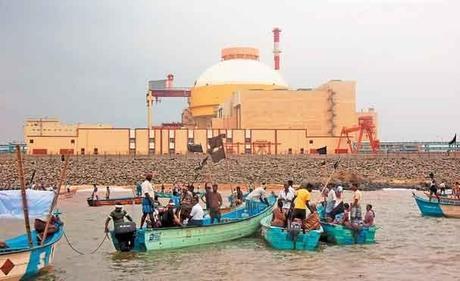 Despite years of opposition and protest from local residents, India opened its largest nuclear power plant on Tuesday in the southeastern state of Tamil Nadu on a stretch of coast slammed by a 2004 tsunami.
Despite years of opposition and protest from local residents, India opened its largest nuclear power plant on Tuesday in the southeastern state of Tamil Nadu on a stretch of coast slammed by a 2004 tsunami.
The joint Indo-Russian Kudankulam Nuclear Power Plant opened at the tail-end of Indian Prime Minister Manmohan Singh’s visit to Russia. Nuclear Power Corporation of India Ltd., the country’s only atomic energy producer, started up part of one of its reactors worth $2.84 billion on Tuesday.
The opening moved forward despite a thousands-strong protest over the weekend in which over 200 people were arrested.
The plant, which was planned in 1988 and started undergoing construction in 1997, has faced a series of delays due to protests from local communities concerned that it will ruin the Bay of Bengal ecosystem and devastate the local fishing economy.
Protests increased in intensity and regularity following the tsunami-sparked meltdown and ongoing disaster at the Fukushima nuclear plant in Japan.
To mark the second anniversary of the Fukushima meltdown in March 2013, 600 boats filled with 4,000 workers in the fishing industry waved black flags in the sea behind the Kudankulam plant.
Despite widespread concerns, Prime Minister Singh has vowed to drastically expand nuclear power in India.



